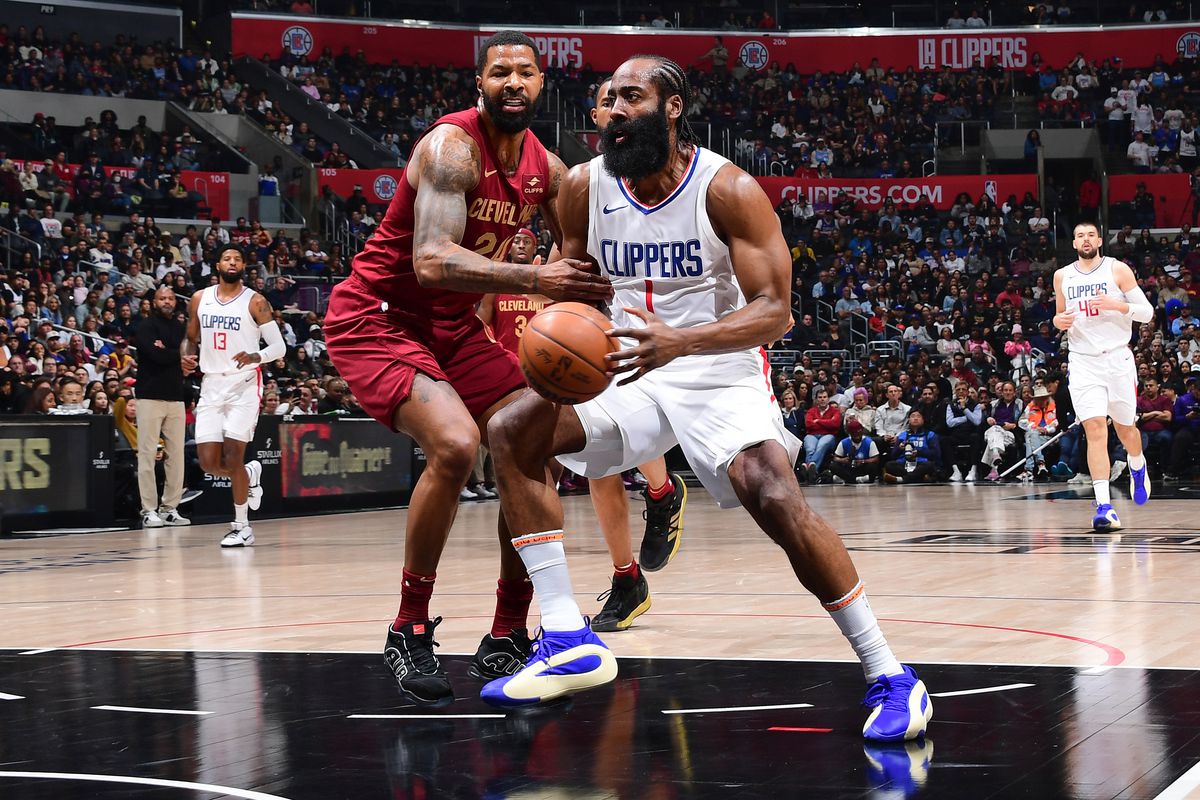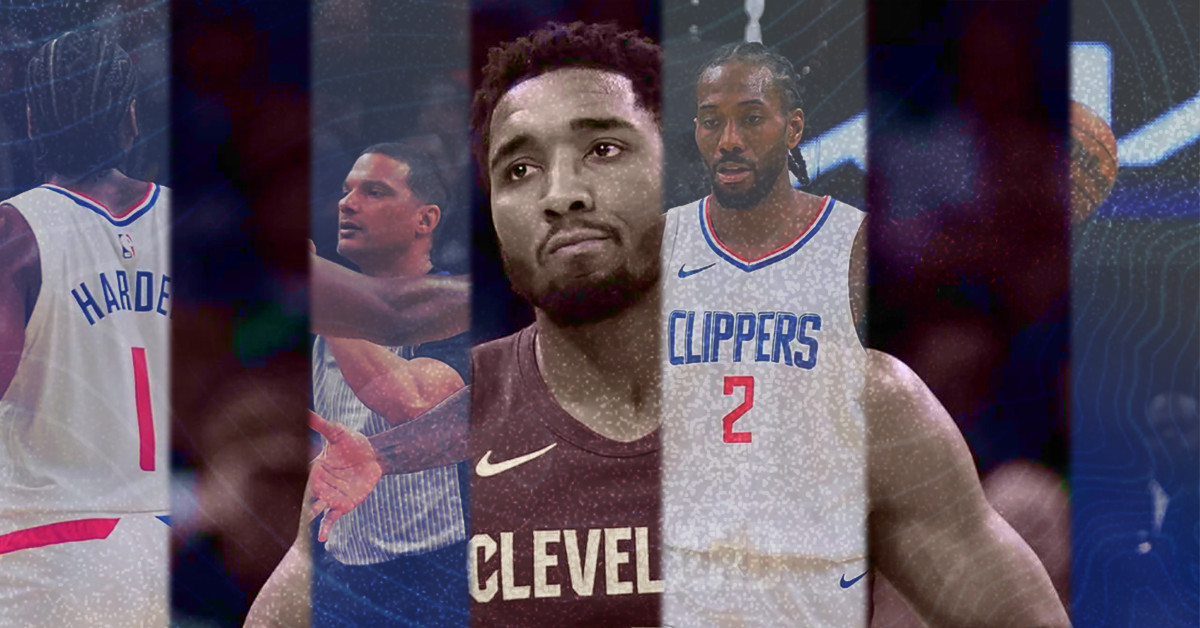Before we go anywhere else, I am not comparing Jarrett Allen and Michael Olowakandi, nor Cavaliers Shawn Kemp to Clippers James Harden, but there’s something to be said about how similar the Cavs and Clippers have been throughout their history (sans LeBron’s years in Cleveland). Both have built quality teams after suffering through years of overpaid, unhappy vets and talented, yet unguided young talent. Those 1998 roster mentions are not franchise players, but it seems like the past keeps repeating itself
Things weren’t always this bad for the 2024 versions of each team, though. At one point, the Clippers went 31-8 from the middle of November until early February. That is a winning percentage of nearly 80%, which would equate to a nearly 65-win season. During that stretch, LA had a net rating of +8.0, which would be second only behind the Celtics (ridiculous) +11.3. Their 124.2 offensive rating seemingly speaks for itself, but for context, the highest offensive rating in a single season is 123.3. The Clippers, despite their reputation, had convinced the world once again.
At a similar point in the season, the Cavaliers dropped only two games across a 20-game stretch. They did so without point guard Darius Garland or franchise cornerstone Evan Mobley. Jarrett Allen had 17 double-doubles over that time period. Donovan Mitchell was getting genuine, real MVP buzz — or, at the very least, real MVP conversation buzz. It seemed that if the Cavs could reintegrate their two missing stars, they would be one of the few teams in the East that could challenge the Celtics.
Instead, both teams now find themselves as low as they could possibly be. The Clippers stopped their climb to the top of the West, falling off a cliff to go 15-14 after the All-Star break. The Cavs, even more disastrously, are five games under .500 in the same stretch and saw all of their momentum dissipate after the return of the two stars that were supposed to buoy their playoff chances.
Despite their extended strings of quality play, the Clippers and Cavs are on the verge of seeing their two respective eras come to an end. Rumors and speculation are already swirling about the and Donovan Mitchell. Would-be fellow cornerstones Harden and Mobley, though at completely different points in their career, will both be searching for long-term extensions.
For these teams, the only way to create the future those stretches gave us a glimpse of is, paradoxically, to reclaim the very heights they reached. Either they get back into form, or they will cease to exist in their current iterations.
Even in a playoff world full of “do-or-die” scenarios, it doesn’t get much more do-or-die than that.
So, how do you recover to reach your own expectations? How do you rediscover yourselves when you only have a week and anywhere between four and seven games to figure out your identity? How do you change quickly when you haven’t been able to all season?
For the Cavs, the good — partially self-made — fortune of playing a team with the same offensive inabilities as them in a first-round series with the Orlando Magic may help conceal any shortcomings for a bit. B…strategy mid-game.
The most obvious change, however, is one that can be easily stated, but is far more difficult to implement: Put simply, Darius Garland needs to be better. 16.6 points and essentially seven assists per game is by no means bad, but the Cavs’ supposed death lineup of Garland, Mitchell, Strus, Mobley, and Allen has been mediocre since Garland’s return on January 31.
It may not be worth comparing Garland’s current impact to his pre-injury self, but instead to the lineup that replaced him in that absence. That aforementioned five has played 368 minutes together this year, and is only +1.4 across those six hours of gameplay. The second-highest minute count, at 232, simply replaces Mobley with sharpshooter Dean Wade, and Garland with versatile slasher Isaac Okoro. That lineup is at the base of the run that had Cleveland demanding attention, posting a ridiculous +19.6 net rating. Their 121.4 offensive rating would be top-three in the league. Their 101.8 defensive rating would blow the rest of the league out of the water.
But, the Cavs don’t have a time machine, and they certainly won’t be able to abandon their franchise point guard, so how can they make Garland work?
There are other questions that Cleveland has been facing all year, including the obvious Mobley disappointments that have led to Derrick Favors comparisons, but getting Garland back up to speed would do more to supercharge the offense that the defense has kept afloat.

And while the Cavs have youth between Mobley, Garland, Okoro, and other talents that can be retooled around, their mirror images in the other conference’s fourth seed have slightly more complicated problems than hoping young stars rediscover their potential or learn to fit together more harmoniously.
These Clippers know who their stars are, and they are not just on their last legs, but potentially down to their last toes.
It obviously doesn’t help that Harden has spent the last two months shooting below 40% from the field and just slightly over 30% from deep. The fact that he’s -62 across their last 24 games since the All-Star Break isn’t any better. But, his role has stayed the same. As a playmaker, Harden has maintained his usefulness.
While Kawhi Leonard could certainly be the piece that pushes them back to their previous standard, his status for game one against the Mavericks is still very much in doubt. Obviously, any fringe top-10 player with a top-five ceiling will help a team’s chance to win, You don’t need to read any basketball analysis to figure that out. But, with Leonard’s questionable status and the reality he’s played zero games in the month of April, the Clippers may need to look in other directions.
So, while the question for the Cavs was how to redefine an identity with improved talent, Los Angeles needs to figure out an identity that isn’t just to “out-talent” the other team. Russell Westbrook and Paul George have been dragging this team to competent basketball, so starting Westbrook, as some notable NBA podcasters have suggested, is certainly a possibility.
Or maybe the answer is in a buyout acquisition a buyout acquisition so unheralded that it was essentially reduced to non-story status.
Maybe the answer for the Clippers is Daniel Theis.
Theis has silently been the best big man on the roster since the trade deadline passed. At only 17 minutes per game, Theis’ dimensionality as a non-zero shooter (not even as a league-average one!) has shown its value beyond more classic centers like Ivica Zubac or Mason Plumlee.
But these are all minor tweaks. What the Clippers really need is to not be the Clippers. This Cavs era has not been defined. The Clippers’ corresponding era has every bit of the sentence, from participle to appositive, filled in. Playoff failure after playoff failure, midseason championship after midseason championship, the only thing missing from the end of this era is the punctuation mark.
Every generation of Clippers basketball, from those awful 90s teams to Lob City, has participated in trickle-down self-destruction. A move to
